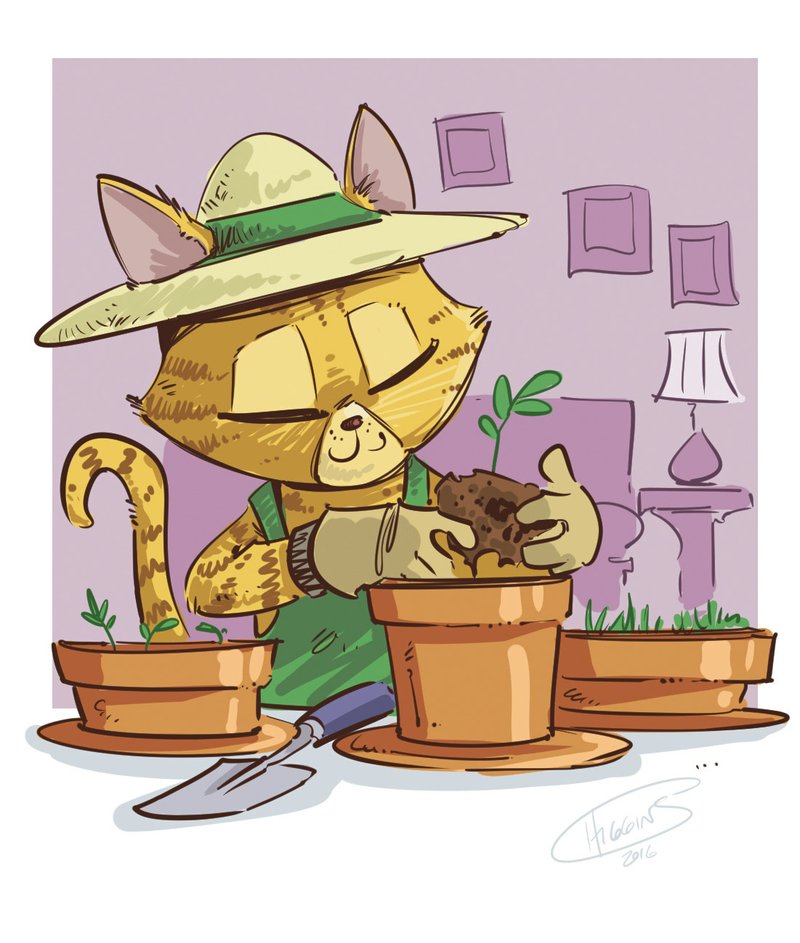Here's a grab bag of tips and news from the pet world.
Cat-friendly indoor gardening: Owners of indoor cats who want to offer their feline friends a taste of the great outdoors within the home can do so by cultivating kitty container gardens. The April issue of Catnip offers a list of plants that are safe and enjoyable for cats.
Catnip (Nepeta cataria), of course, tops the list of tempting kitty nibbles although it's best not to provide it for cats with a history of seizures. Catmint (Nepeta faassenii) runs a close second, but use a large pot when planting indoors because this is a bush that can grow at least a foot tall and possibly 3 feet wide.
Other green treats include cat thyme (Teucrium marum), wheat grass, oat grass and rye grass. Cats and people both enjoy the fragrance of lavender, creeping rosemary and lemon balm.
Not all cats like all plants so you may have to experiment to see what tempts your pet.
Before planting anything or bringing a new plant into the house, you might want to refer to a list of plants toxic to cats provided by the Animal Poison Control Center of the American Society for the Prevention of Cruelty to Animals. The list is online at tinyurl.com/lk9v8kb.
Let sleeping dogs -- and cats -- sleep: Pet owners who believe the presence of their pets in bed makes for sweet dreams and better sleep might feel encouraged by a Mayo Clinic study released in December.
More than 40 percent of pet owners in a survey by the clinic's Center for Sleep Medicine in Arizona reported that letting pets slumber with them was comforting and soothing. While 20 percent said the animals disturbed their sleep somewhat, those who responded positively said having pets in bed improved their sense of security and well-being.
Earlier surveys -- including a 2014 survey by the Mayo Clinic -- found that pets can disrupt their owners' sleep, but most pet lovers wouldn't dream of kicking the furry family members out of bed over a few lost winks. The American Veterinary Medical Association recommends using common sense when pets are bed mates by keeping vaccinations up to date, bathing pets regularly and making sure animals are free of ticks and fleas.
Countermeasures for counter surfers: Cat owners are always looking for a way to prevent inquisitive kitties from exploring or lounging on countertops as well as kitchen and dining tables.
There are many reward-based training techniques, but some pet owners prefer methods that require less of a commitment of time and patience so they turn to "aversion" techniques. To avoid confusion, this type of training doesn't involve punishment (which is never recommended) but instead uses a negative stimulus to teach an animal to avoid an area or thing, such as the sofa or kitchen counter.
The trick to aversion training is to make sure the animal associates the stimulus with the area or item and not with his owner. One aversion tool is the battery-operated PetSafe ScatMat, which is a plastic mat wired to provide a three-second mild static pulse when touched. A friend who uses one for her two cats says the electric pulse feels like the charge of static electricity you might receive after walking across carpet during the winter.
To use the mat (available in several sizes), set it on the countertop or area you want the pet to avoid, then flip the switch on the 9-volt battery pack. There are three intensity levels (the lowest is usually effective). When the cat steps on the mat, a static pulse startles him. The electric pulse doesn't harm the animal but gets his attention. Pets will often avoid the mat after one encounter, making it possible to later place the mat wherever it's needed without having to turn it on.
ScatMat is available online and in pet supply stores for $40 to $80, depending on size.
Family on 04/20/2016
